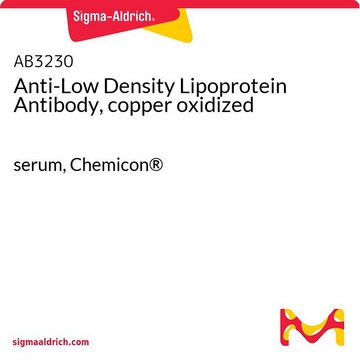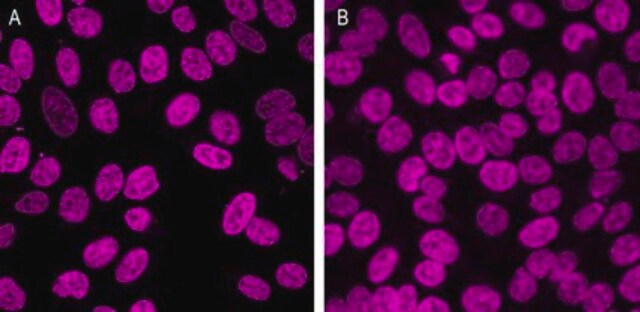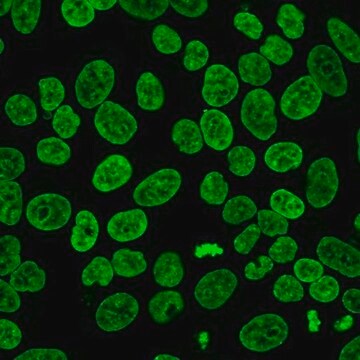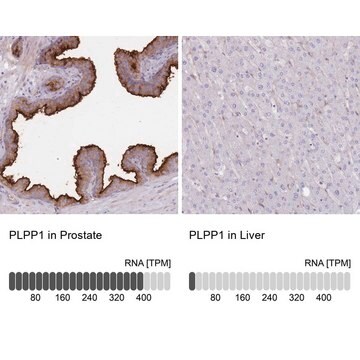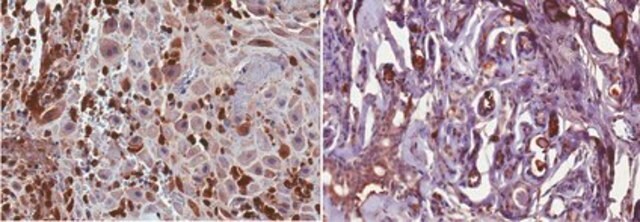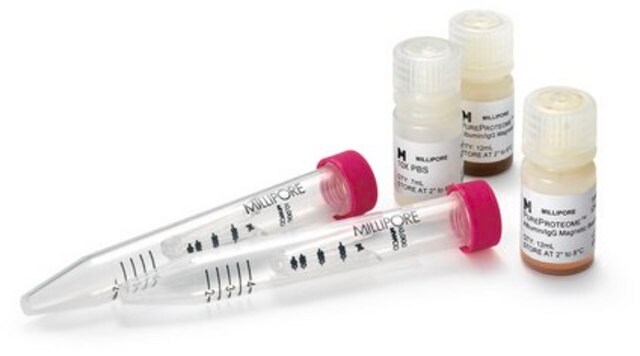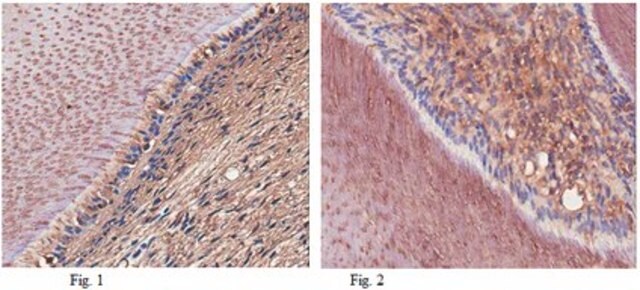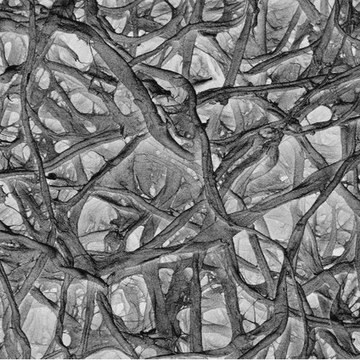MABS1220
Anti-LTP/CETP Antibody, clone 14–8F
clone 14-8F, from mouse
Sinonimo/i:
Cholesteryl ester transfer protein, CETP, Lipid transfer protein I, LTP
About This Item
Prodotti consigliati
Origine biologica
mouse
Livello qualitativo
Forma dell’anticorpo
purified immunoglobulin
Tipo di anticorpo
primary antibodies
Clone
14-8F, monoclonal
Reattività contro le specie
mouse, human, rabbit
tecniche
ELISA: suitable
western blot: suitable
Isotipo
IgG2aκ
N° accesso UniProt
Condizioni di spedizione
wet ice
modifica post-traduzionali bersaglio
unmodified
Informazioni sul gene
human ... CETP(1071)
Descrizione generale
Specificità
Immunogeno
Applicazioni
ELISA Analysis: A representative lot was conjugated with HRP and used as the detection antibody in combination with clone 3-11D (Cat. No. MABS1219) as the capture antibody for the detection of mouse plasma LTP/CETP by sandwich ELISA (Wu, C.A., et al. (2002). Arterioscler .Thromb. Vasc. Biol. 22(8):1347-1353).
ELISA Analysis: A representative lot, when conjugated with HRP and used as the detection antibody, showed pH-dependent LTP/CETP-binding activity with the maximum reactivity at a weakly acidic condition of pH 5 to 5.5 in sandwich ELISA applications (Saito, K., et al. J. Lipid Res. (1999). 40(11):2013-2021).
Western Blotting Analysis: A representative lot detected both rabbit and human LTP/CETP by Western blotting under either reducing or non-reducing condition (Ko, K.W., et al. (1994). J. Biol. Chem. 269(45):28206-28213).
Inhibits Activity/Function: A representative lot inhibited both rabbit and human LTP/CETP-mediated triglyceride (TG), but not cholesteryl ester (CE), transfer from low density lipoprotein (LDL) to high density lipoprotein (HDL) (Ko, K.W., et al. (1994). J. Biol. Chem. 269(45):28206-28213).
Inhibits Activity/Function: A representative lot effectively inhibited human LTP/CETP-mediated triglyceride (TG) transfer from high density lipoprotein (HDL) to to apoB-containing lipoproteins in human plasma. Clone 14-8F (14-8H) also inhibited cholesteryl ester (CE) transfer in the same assay by 40% (Ko, K.W., et al. (1994). J. Biol. Chem. 269(45):28206-28213).
Signaling
Lipid Metabolism & Weight Regulation
Qualità
Western Blotting Analysis: 0.5 µg/mL of this antibody detected purified human plasma LTP/CETP.
Descrizione del bersaglio
Stato fisico
Stoccaggio e stabilità
Altre note
Esclusione di responsabilità
Non trovi il prodotto giusto?
Prova il nostro Motore di ricerca dei prodotti.
Codice della classe di stoccaggio
12 - Non Combustible Liquids
Classe di pericolosità dell'acqua (WGK)
WGK 1
Punto d’infiammabilità (°F)
Not applicable
Punto d’infiammabilità (°C)
Not applicable
Certificati d'analisi (COA)
Cerca il Certificati d'analisi (COA) digitando il numero di lotto/batch corrispondente. I numeri di lotto o di batch sono stampati sull'etichetta dei prodotti dopo la parola ‘Lotto’ o ‘Batch’.
Possiedi già questo prodotto?
I documenti relativi ai prodotti acquistati recentemente sono disponibili nell’Archivio dei documenti.
Il team dei nostri ricercatori vanta grande esperienza in tutte le aree della ricerca quali Life Science, scienza dei materiali, sintesi chimica, cromatografia, discipline analitiche, ecc..
Contatta l'Assistenza Tecnica.